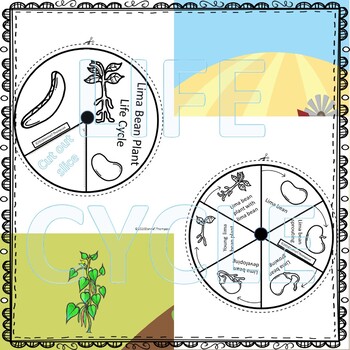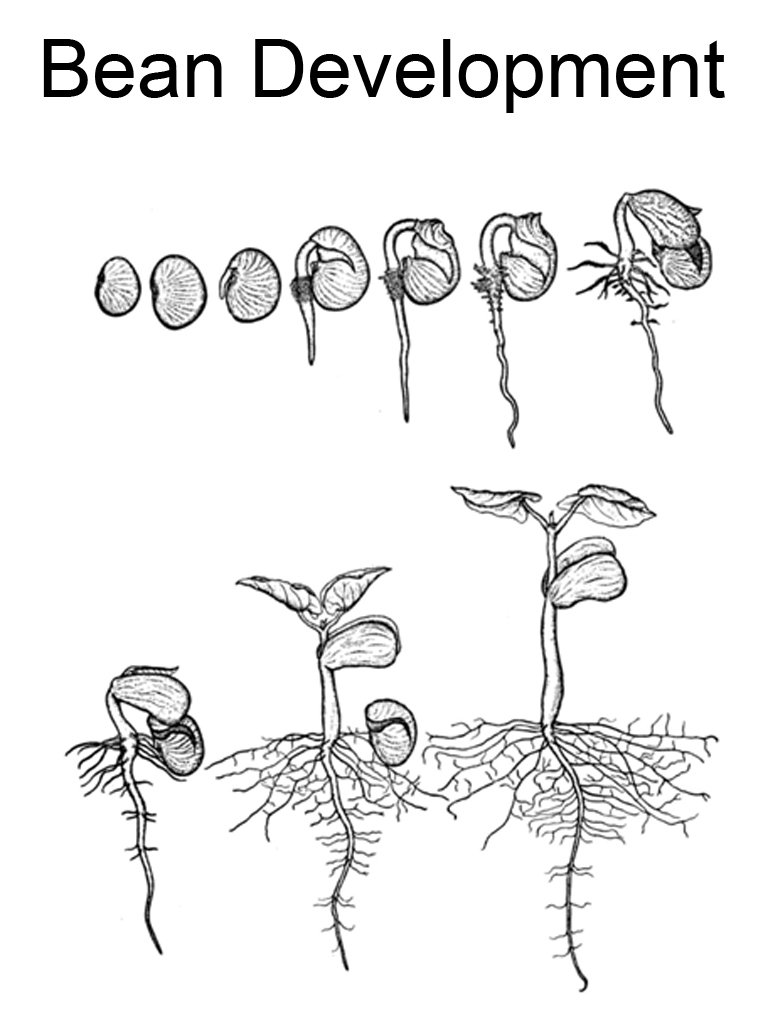
The hypocotyl embryonic stem is put out, from which more roots grow. The hard, outer coating of the bean ruptures and the first root (the radicle) is put out into the soil to absorb more nutrients. Gibberellin produces amylase, an enzyme which breaks down the starch stored in the bean to be used as glucose for energy, or to build cell walls. Germination starts when the bean absorbs water, causing a plant hormone called gibberellin to be produced. After enough growth, the plant flowers, which are pollinated and set new bean pods. A radicle root is put out, followed by the hypocotyl stem, the cotyledon leaves and epicotyl shoot. When beans absorb water, gibberellin is produced, which then triggers the production of amylase, breaking down starch to use for the germination process. The seed of a bean plant is the same bean that you will find on your plate. Life cycle of a bean plant Life cycle of a bean plant

The plant flowers, and once pollinated, begin to produce pods with the time to harvest depending on the variety.īeans are a staple in the science classroom, as they clearly demonstrate the marvel of the plant life cycle to young botanists. A hypocotyl stem, cotyledon leaves and epicotyl shoot then follow.

Beans are a wonderful plant to experience the life cycle of flowering annuals with, as they advance quickly through distinctive phases and produce a recognisable and easy to harvest seed at the end.īeans germinate when water is absorbed, first producing a radicle root to absorb nutrients from the soil.

One of the most rewarding things about gardening is seeing things grow day by day.


 0 kommentar(er)
0 kommentar(er)
